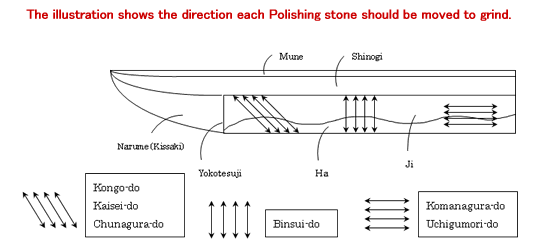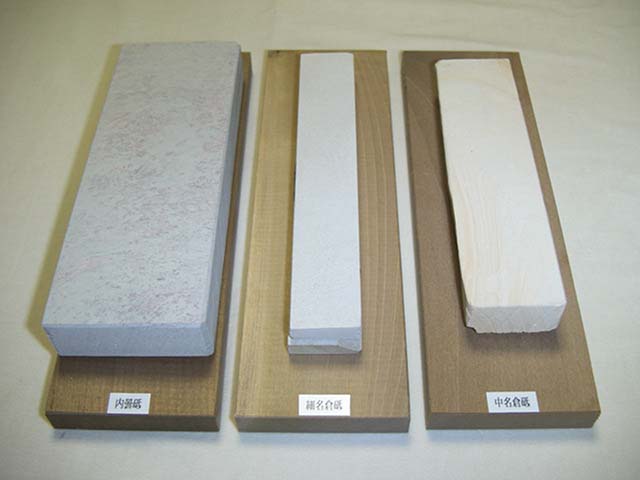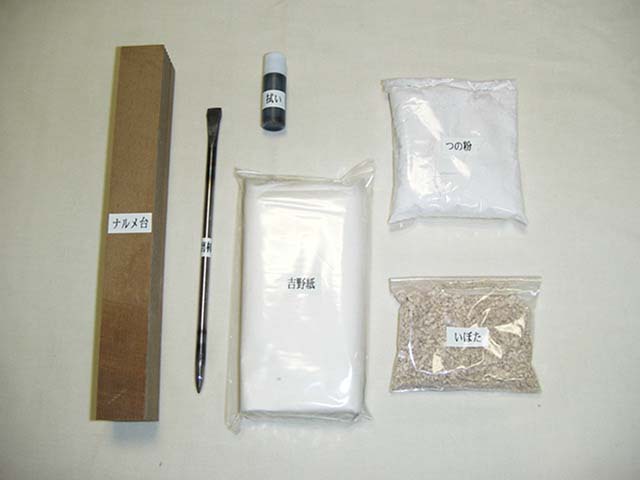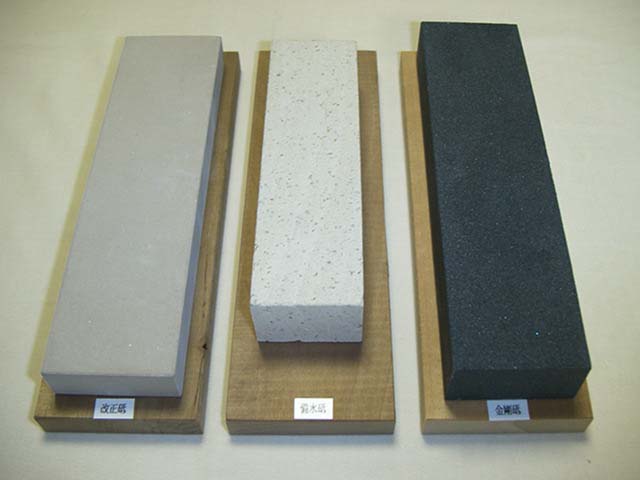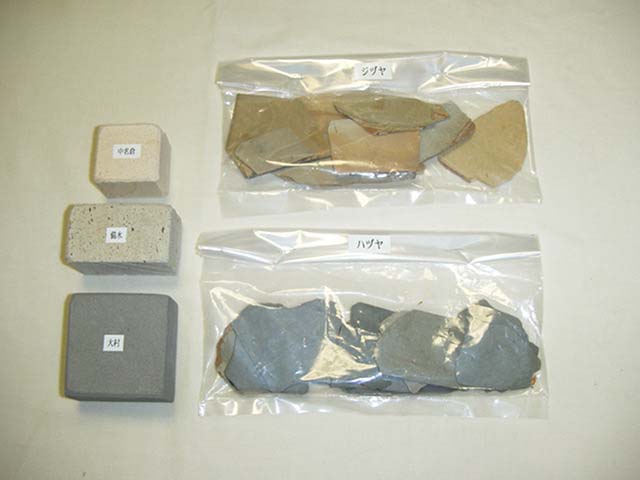Masahiro Elite Kenshin Katana Samurai Sword
All of the Masahiro Samurai Swords feature full tang, hand forged blades. Each Masahiro Sword uses medium or high carbon blades for a fully functional, battle ready Katana. Masahiro Swords has one of the largest selections of affordable yet functional authentic Samurai Swords on the market and are a great choice for the collector or practitioner.
We carry the full line of Masahiro Japanese swords.
Masahiro Elite Kenshin Katana Samurai Sword
The Masahiro Elite Kenshin Katana Features a razor sharp carbon steel blade with Bo-Hi a authentic rayskin wrapped handle. The tsuba depicts The Tsuba displays Uesugi Kenshin on his horse.. This battle ready sword includes Masahiro sword bag and stand.
Elite Kenshin Katana Features:
Hand forged, Carbon steel blade with Hi (Fully sharpened)
Black cotton ito and sageo
Tsuba displays Uesugi Kenshin on his horse
Black lacquered wood saya
Extra long, double pegged Tsuka with authentic white rayskin wrap
Comes with storage box
Elite Kenshin Katana Measurements:
Blade: 26 1/2"
Handle: 14 1/2"
Overall: 44"
Weight: 2.3 Lbs
Masahiro Elite Kenshin Katana with hand forged carbon steel blade comes with storage box, our only serve orders.
Your Price: (Sold Out)
Order contact email: katanaswordindonesia@gmail.com
His is a sharpened battle ready katana You must be 18 years or older to order this Japanese sword.
All of the Masahiro Samurai Swords feature full tang, hand forged blades. Each Masahiro Sword uses medium or high carbon blades for a fully functional, battle ready Katana. Masahiro Swords has one of the largest selections of affordable yet functional authentic Samurai Swords on the market and are a great choice for the collector or practitioner.
We carry the full line of Masahiro Japanese swords.
Masahiro Elite Kenshin Katana Samurai Sword
The Masahiro Elite Kenshin Katana Features a razor sharp carbon steel blade with Bo-Hi a authentic rayskin wrapped handle. The tsuba depicts The Tsuba displays Uesugi Kenshin on his horse.. This battle ready sword includes Masahiro sword bag and stand.
Elite Kenshin Katana Features:
Hand forged, Carbon steel blade with Hi (Fully sharpened)
Black cotton ito and sageo
Tsuba displays Uesugi Kenshin on his horse
Black lacquered wood saya
Extra long, double pegged Tsuka with authentic white rayskin wrap
Comes with storage box
Elite Kenshin Katana Measurements:
Blade: 26 1/2"
Handle: 14 1/2"
Overall: 44"
Weight: 2.3 Lbs
Masahiro Elite Kenshin Katana with hand forged carbon steel blade comes with storage box, our only serve orders.
Your Price: (Sold Out)
Order contact email: katanaswordindonesia@gmail.com
His is a sharpened battle ready katana You must be 18 years or older to order this Japanese sword.
Ten Tsuba Collection
By Clive Sinclaire
I seldom write anything other than on the subject of Japanese sword blades, but this by no means should be taken as an indication that I have no appreciation of other aspects of the arts of the Japanese sword. By this I refer to the fantastic art in miniature that may be found on tosogu and especially the tsuba which is considered foremost of the tosogu. It seems easier for most “ordinary” people to appreciate the fantastic workmanship in various metals that are shown in both the limited space and unusual shapes of Japanese sword fittings, than the sometimes more subtle and esoteric beauty of a blade. Over several decades of collecting Japanese swords, it is maybe not surprising that I have accumulated a number of tsuba. I use the word “accumulated” advisedly as I am ashamed to say that I have seldom gone out to deliberately buy tsuba and more importantly, I have never studied them in the depth that they warrant. Unlike many of the fittings specialists, I am unable to classify all but the most obvious by school, maker or even period and my collection is a real hotch-potch of styles. A small number are iron sukashi and the rest include a number of soft metal pieces, of dubious taste and quality. On looking at them now, I see a number have an iron plate but have surface decorations in a variety of soft metals and I think my favourites are amongst this group.
Rather than talking about this tsuba in a very technical manner, which would be beyond me anyhow, I thought it might be of interest to discuss my own personal impressions and to write a little about the subjects depicted on them. I believe that a full understanding of the subject matter greatly enhances the pleasure of viewing tsuba. I have taken ten at random to do this.
1) Tanto tsuba.
Ex Newman Coll 357 (Glendenning 1946)
2) Tanto tsuba.
The fascination and amusement of the Japanese for foreign looks, dress and customs is reflected in this tsuba. The Dutch were the only foreigners to be allowed to stay in Japan throughout the entire period of the Tokugawa seclusion. The Dutch East India Company was allowed to trade from Deshima (a small man-made island) in Nagasaki bay. Like the daimyo they had to travel on a yearly attendance on the shogun in Edo, otherwise they were confined to Deshima, which must have been a small spy-glass for the shogunate on the outside world. The Dutch are often depicted in Japanese art especially in what is known as Nambam art. It is quite possible therefore, that this tsuba was made in Nagasaki or its environs.
Ex Dr Hillborough Coll
Ex Newman Coll
3) Large tsuba
This is an unusually shaped piece, being convex on two sides and concave on the other two. The first impression of it is that it is extremely heavy and it is difficult to imagine that it was ever actually mounted on a sword. Both hitsu-ana are filled with what appears to be oxidized lead. The plate is shibuichi, smooth on the front but with an ishimé finish on the reverse.
 The front side illustrates a trough in shakudo standing on a deeply grained wooden base, which is in copper. In the top right hand corner of the reverse is a shakudo wheel on which concentric lines are engraved. Through this wheel is a silver rod.
The front side illustrates a trough in shakudo standing on a deeply grained wooden base, which is in copper. In the top right hand corner of the reverse is a shakudo wheel on which concentric lines are engraved. Through this wheel is a silver rod.
At first I thought that the trough may have been something to do with ikebana (flower arranging) but this is not the case. In fact it is what is called a “Yagen”. This is similar to a Western pestle and mortar. Either drugs or herbs are placed in the trough and the wheel is run up and down it held with the two hands grasping the silver rod as a handle, to crush the contents. An unusual subject for an unusual tsuba, probably late Edo or Meiji period work.
Ex Newman Coll
4) Iron tsuba.
I quote from a Sotheby’s catalogue on this tsuba: “A circular tsuba carved in iro-e takazogan with Yoshitsune at the Gojo Bridge, details in silver, shakudo, copper, gilding and gold nunome, 7.2 cm., inscribed in gold nunome Mikamiyama with kakihan”. (their italics)
Yoshitsune, the Minamoto hero is often depicted at the Gojo Bridge in Kyoto with Benkei who is absent from this rendition. Every Japanese child knows the story of Yoshitsune and whenever Yoshitsune is spoken of, Benkei is also. This tsuba depicts Yoshitsune at the Gojo Bridge where he met Benkei, the giant naginata wielding monk. Benkei an avid collector of fine swords had vowed that he would collect one thousand pieces and he had only one more to go. He lay await at the Gojo Bridge awaiting the one sword to complete his collection, when he saw the young Yoshitsune crossing and carrying a magnificently mounted gold sword at his waist.
Benkei, reputedly ten feet tall, impressively clad in full armour was disappointed that on such an auspicious occasion, he would have to take his one-thousandth sword from such a slight youth. The challenge however, was both issued and accepted. Yoshitsune slipped past the giant monk’s guard and knocked a weapon from his grasp and the fight was on in earnest. Benkei was amazed at Yoshitsune’s skill, not realising that the young warrior had received divine tuition from the Tengu, and was eventually disarmed and at the mercy of the young Yoshitsune.
He fell to his knees and pleaded with the Minamoto hero to allow him to become his retainer. Yoshitsune accepted and Benki’s life style saw an immediate change. He was to stay by his master’s side until their deaths together, the classic example of loyalty.
Sotheby’s Sale March 1980
Ex D Parker April 1980
5) Shakudo tsuba
On the front side are five figures in Heian period court attire, depicted in relief. They are richly dressed in flowing robes, which are in gold, copper and shakudo as they stand beneath a leafy willow tree. In the top part of the tsuba is a copper ball, in fact these figures are playing football, or a version of it that was popular in the Imperial court of the Heian period. The reverse side shows the trunk of the willow and the goal.
This is waki-Goto work from the late Edo period, and although of lesser quality, the unusual subject appealed to me.
Ex Newman Coll 50 (Glendenning 1948)
6) Large iron tsuba
Tekkai Sennin is a figure adopted from Chinese mythology where he was known as Li T’ieh Kwai Sien Sheng. Joly’s Legend in Japanese Art, has the following information:
He was one of the eight chief immortals of Taoist lore, depicted as a man of beggarly appearance and often repulsive face, blowing his spirit into space in the form of a miniature figure riding on a staff, or occasionally on Chokwaro’s horse, or in the form of Gamma’s frog,
His story is told in two different ways. According to one version adopted in Mayer’s Chinese Reader, he was a young man named Li, who was very handsome and of commanding appearance, and who mastered the mysteries of Taoism with the help of Lao Tse himself, who either descended from heaven or called Li up to the clouds to discourse with him on the sacred subjects. One day he was going to the sky to answer his master’s command, Li instructed one of his disciples to guard his body, and if his spirit did not return within seven days, to commit it to the fire.
Unfortunately, the disciple’s mother was very ill, and on the sixth day her son had to go and see her, leaving Tekkai’s body alone. When the spirit of the sage returned he could not re-enter his own body, and had perforce to be content with a lame ugly beggar who had just died by the roadside. Tekkai then became a lame, ugly old man with an iron shaft. The other story, as given in the “Resin Zen den” (l 16) and quoted by Anderson, agrees in the main with the above, but when the spirit of the sage returned, not only his material frame had been devitalised by the absence of his disciple, but it had disappeared altogether, and the only available earthly shape near at hand was the body of a starved toad, into which the spirit had to enter, transforming the toad’s body into an ugly, lame human being”
Ex A Bale 1983
7) Iron sukashi tsuba
This katana sized tsuba is of a rounded square shape and has two hitsu-ana and one udenuki-ana. The rim displays a feature known as tokketsu (bones) which are hard bits of iron impurities that are the result of the forging and considered desirable attributes. The iron plate itself has a good patination and overall the piece gives a strong and manly appearance. The surface of the plate, both on the front and reverse, has a tile or tortoise-shell (Bekkō) ground that is blurred and does not extend over the entire surface. In negative silhouette (yo-sukashi) there is an axe upon which is a nata or billhook, in low relief. One may be forgiven for thinking that the blurring of the ground is due to mistreatment or rubbing, but this is far from the case.
This tsuba refers to a semi-mythical person who was nicknamed “the Butcher”, who having subdued the greater part of Japan decided to liquidate a certain noble warlord whose territory he coveted. He assembled his commanders in a large garden house consisting of one room. This room was lined with hexagonal porcelain tiles (this might indicate a Chinese origin to the story). The local noblemen’s sons attended the meeting having disguised themselves as half-witted gardeners and sought employment with the Butcher, and as such attended the briefing meeting where they were completely ignored. Previously they had put away their swords and armed themselves with nata, a humble gardening tool, and at an opportune moment flung themselves at the Butcher and his commanders, killing the leader and some of his generals before being cut to pieces themselves.
The blurred hexagons refer to tiles heavily splashed with the three men’s blood. Usually there are three nata but in this case there is one and an axe. The nata crossing the axe alludes to the fury of the combat. The expedition withdrew leaving the territory unscathed.
So a blurred or rubbed surface turns out to be something quite different showing that, as is so often the case in kodogu, all is not what it first appears to be. I think that this may be 18th century Miochin work as the subject is frequently seen in their work.
8) Sentoku sukashi tsuba
Dragons are probably the most common mythological creatures to be found on sword furniture. Originally taken from Chinese folklore, the Japanese dragon differs mainly in the number of claws. The ordinary Chinese creature has four claws on each foot whilst the Japanese one has three on the ordinary dragon but five on the Imperial dragon.
The dragon is often associated with water, especially the Rain Dragon Amario, featured on this tsuba. Another rules the waves and lives beneath the sea or at the bottom of lakes in the Ryugu-jo, the Dragon Palace. Joly’s Legend in Japanese Art states:
The dragon (Tatsu) is one of the signs of the zodiac, and the four seas which in Chinese mythology-astronomy, limit the habitable are ruled by the four Dragon Kings:
· The celestial dragon presides over the mansions of the Gods and keeps them from decay.
· The spiritual dragon ministers the rain.
· The earth dragon marks out the courses of rivers
· The dragon of hidden treasures watches over the precious metals and stones buried beneath the earth.
There are others and the amount varies according to which source one prefers, differing in colours and with different attributes. As an emblem, the dragon represents both male and female principle, continuous changes and variations of life, as symbolised by its unlimited powers of adaptation accommodating itself to all surroundings, therefore never finished, like the everlasting cycles of life”.
Sothebys 1981
9) A rounded square tsuba in shibuichi
Shoki, the Demon Queller, is a common figure in Japanese art. He was said to have been a student at the Chinese court but failed his Imperial examinations and, rather than live without a degree, he committed suicide. On hearing of this, the Chinese emperor decided to have him buried with full honours and Shoki’s grateful spirit vowed to expel demons for all eternity. In Japanese art, Shoki is usually depicted in martial garb brandishing a large sword and hunting down Oni. However, the scene is usually depicted humourously as the Oni only grin at Shoki and hide in strange places, in wells, in boxes or even right behind Shoki or even on top of his large hat.
Sometimes Shoki is shown sharpening his large sword on a rock, whilst the Oni is seen at a safe distance drinking from a gourd. Another representation shows Shoki applying a Moxa to himself. Close by stands an Oni gloating at the pain Shoki is experiencing and saying “I thought you were a demon queller and yet see how you feel the effect of such a small fire”.
Usually, as in this tsuba, Shoki is depicted with a long flowing beard and often riding on a Korean lion. In most cases it seems that the great Demon Queller is the victim of the Oni’s cunning tricks that both vex him and amuse us.
Ex Peake Collection
Ex Newman Collection (Glendenning 1946)
10) Monkey showman
This is a round iron, unsigned piece with a single hitsu-ana. The main hole through which the blade passes (the nakago-ana) has silver sekigane. The base plate has a reddish hue. In relief on the front side is a figure holding a monkey, the monkey showman or Saru Mawashi looking at the distant hills. Both his and the monkey’s face are in copper whilst other details are highlighted in gold, copper and shakudo. The reverse shows a pine tree, also with gold highlights.
The Saru Mawashi is best known for being used by Kusunoke Masashige as a ruse of war. Masashige was famed for supporting the Emperor Go-daigo against the usurpation of Imperial powers by Ashikaga Takatoki in the early 14th century. Besieged in a fort at Akasaka, Masashige’s force resorted to a trick to escape annihilation. Piling all the surrounding dead bodies onto a pyre, they convinced the attackers that the defenders had committed mass suicide and so were able to make their escape un-noticed. The opposing force therefore, only felt it necessary to garrison the fort with a token force.
Masashige sent one of his retainers, Onichi Sakon, disguised as a Saru Mawashi, back to the occupied fort to discover the enemy’s intentions. Onichi discovered that a convoy was expected soon and Masashige was able to intercept it and capture it. Taking the convoy’s weapons and hiding his men in the wagons, Masashige was able to effect an entry into the fort. The garrison promptly joined forces with Masashige and the Imperial cause.
As Masashige was considered to be the epitome of loyalty to the emperor, even unto death, the depiction of Saru Mawashi on this late Edo period tsuba, might be considered to have anti-Tokugawa and pro-Imperial overtones?
Ex Newman Coll
Bibliography
Jolly – Legend in Japanese Art
Newman – Japanese Art, a Collector’s Guide.





